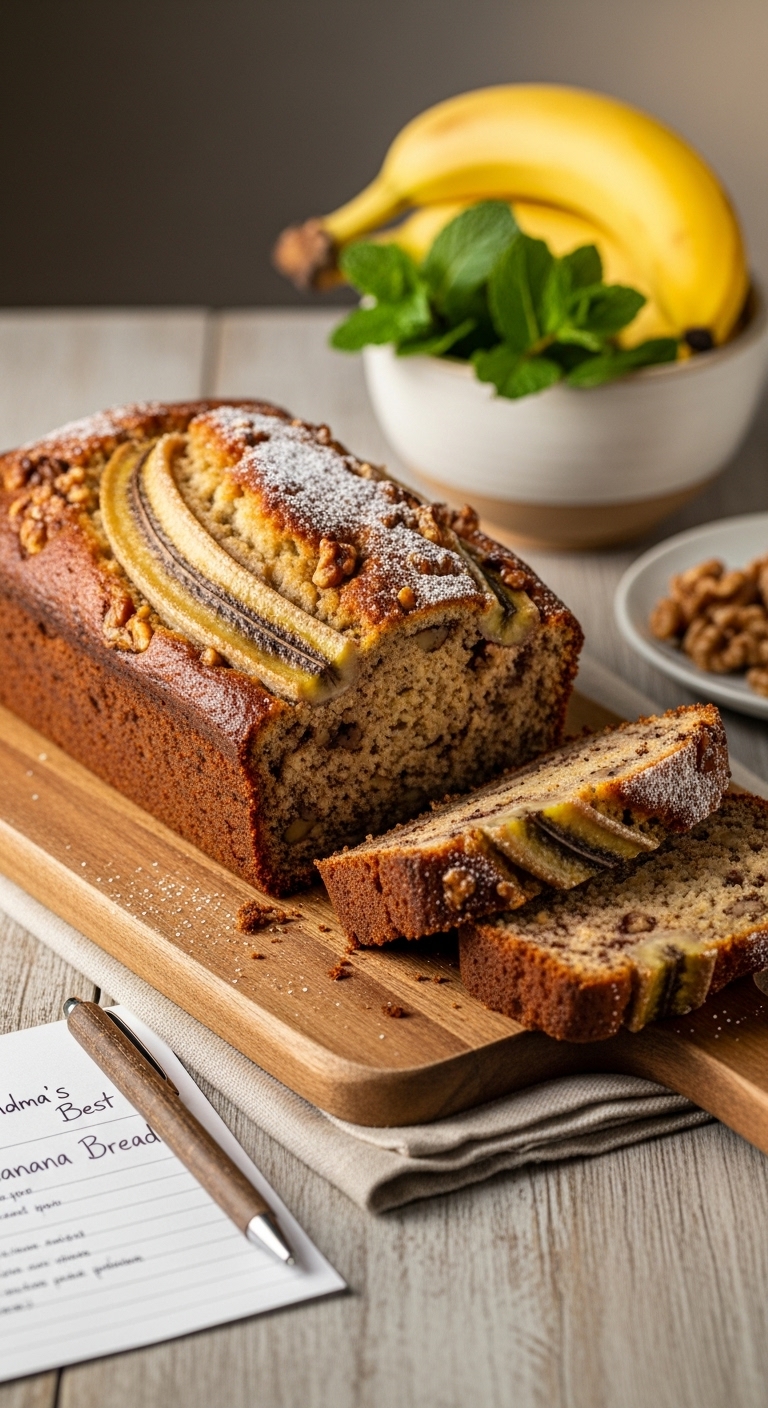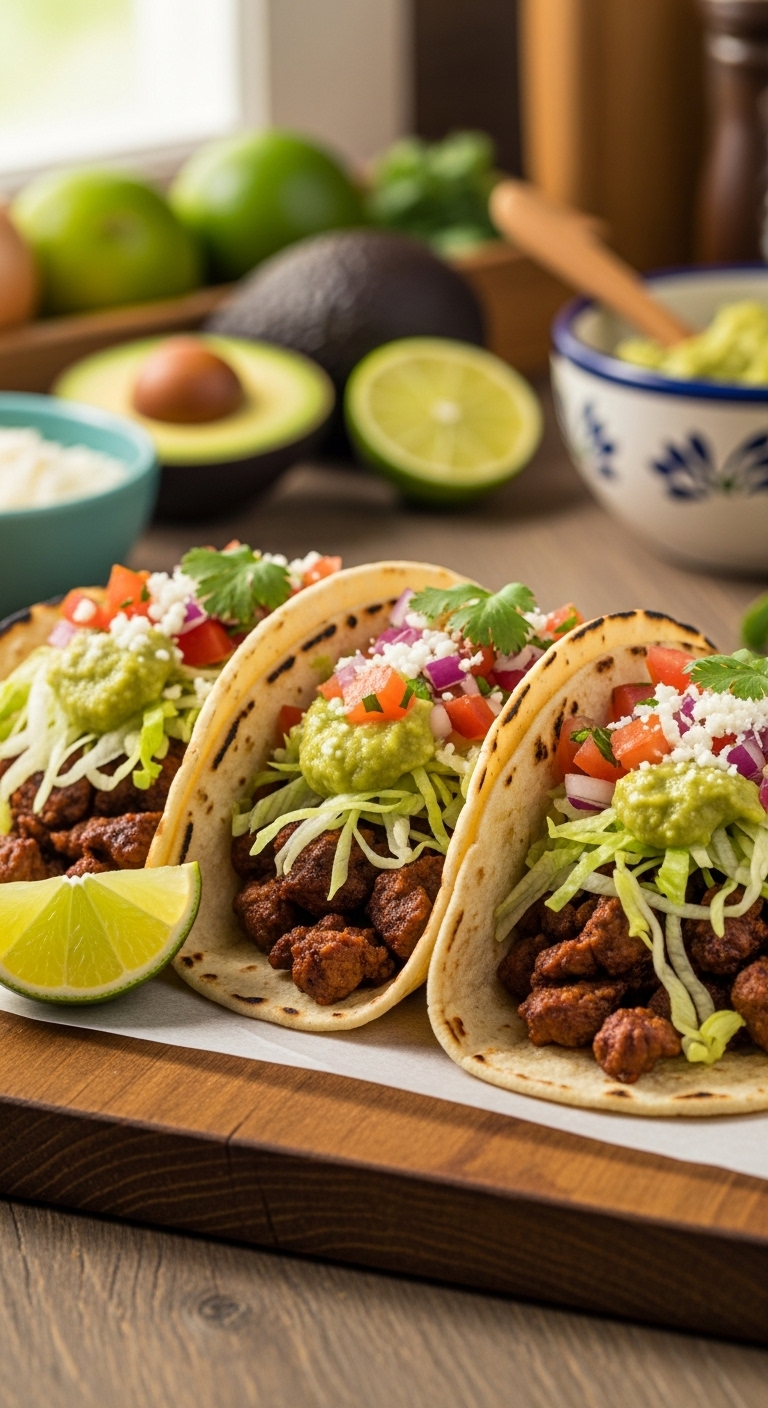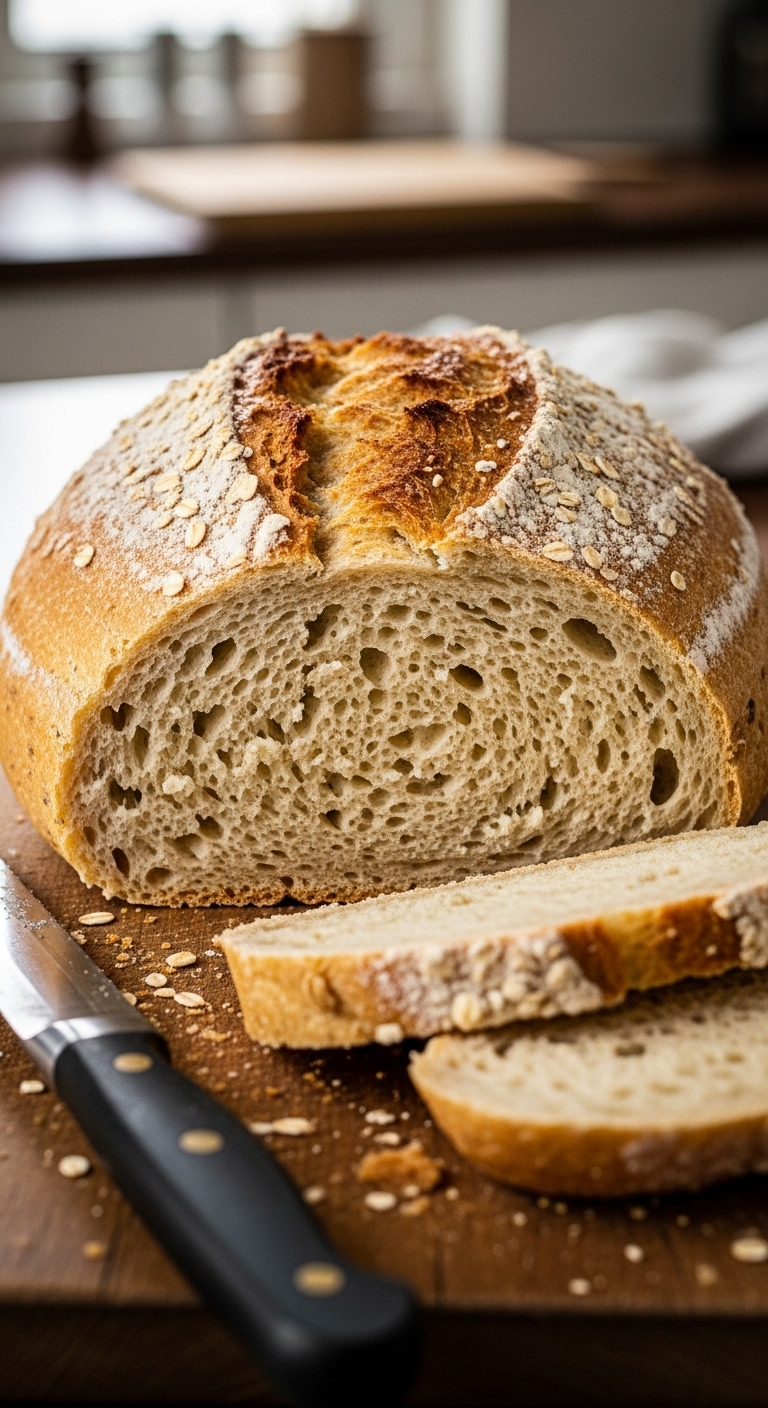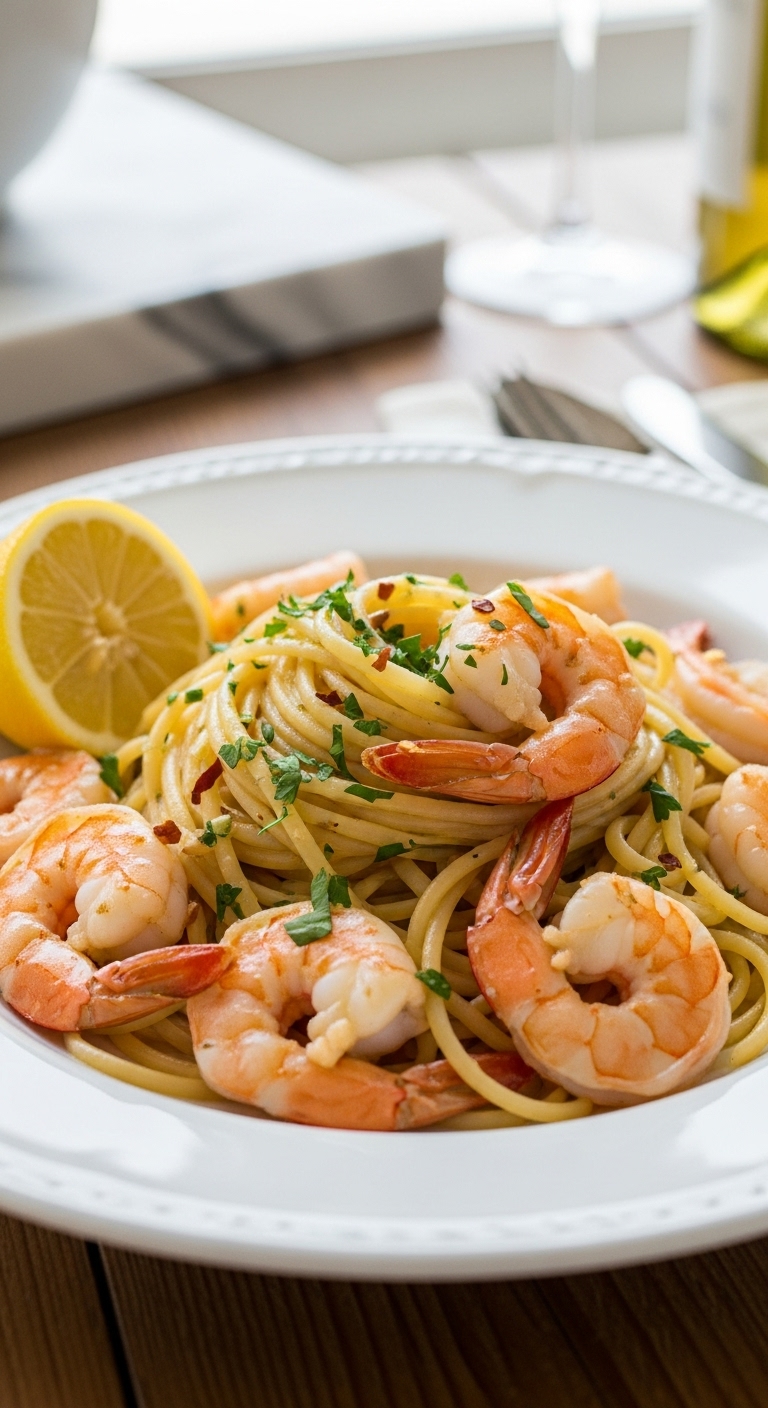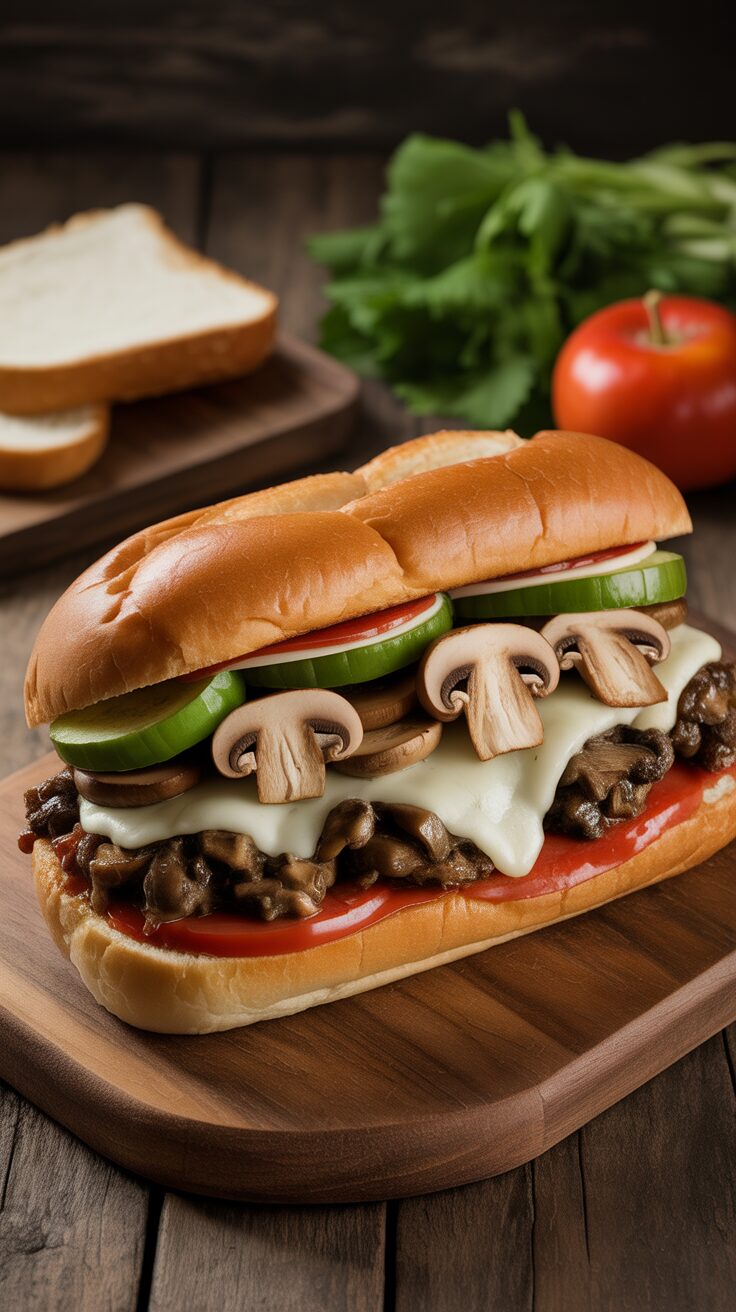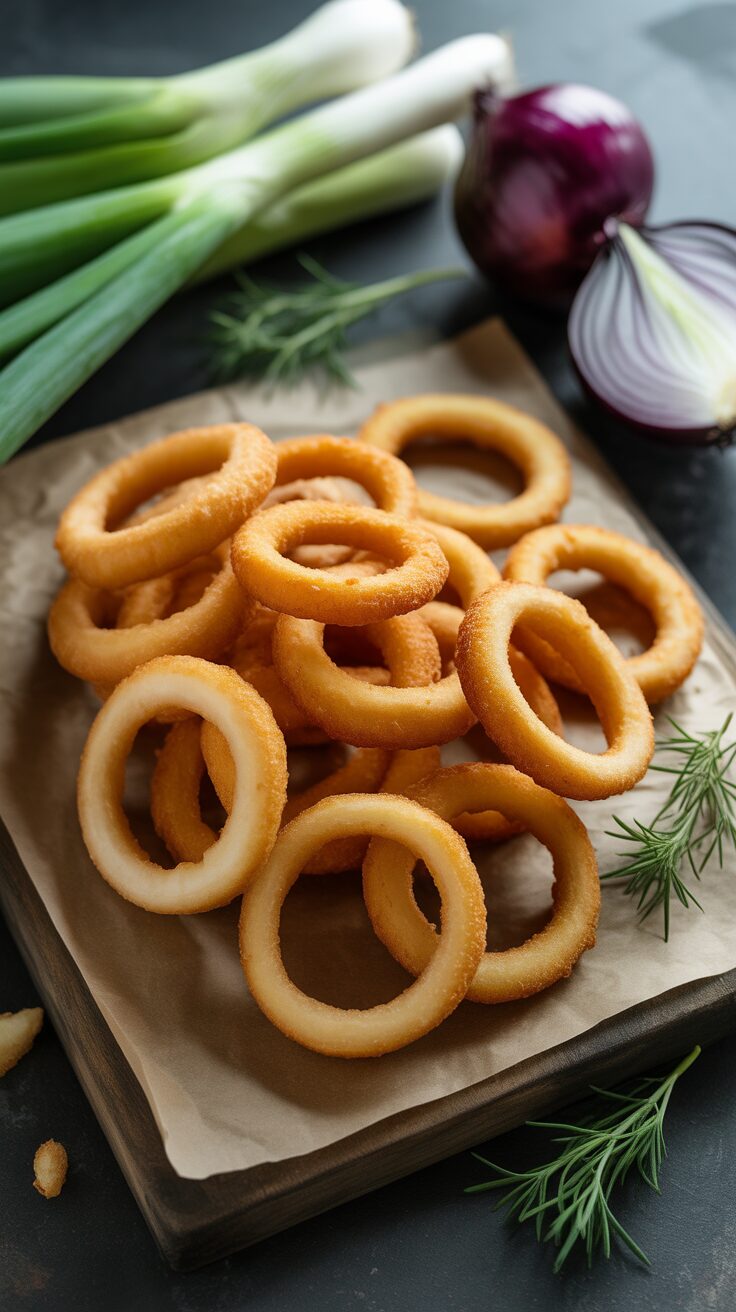San Sebastian Cheesecake Recipe: The Creamy, Caramelized Delight
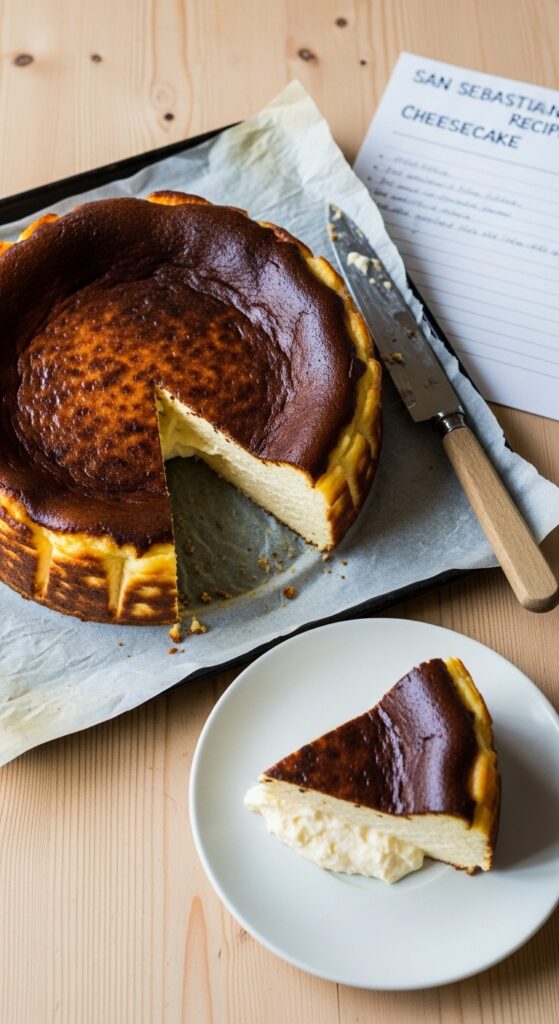
Few desserts evoke the perfect balance of indulgence and simplicity like a San Sebastian cheesecake. Known for its deeply caramelized top, creamy interior, and rich, slightly tangy flavor, this Basque-inspired dessert has taken the world by storm. Unlike traditional cheesecakes, it requires no crust, no water bath, and yet delivers a complex, velvety texture that melts in your mouth.
Whether you’re a baking enthusiast or a dessert lover seeking a crowd-pleasing showstopper, this recipe will guide you through every step, from ingredients and preparation to tips for perfect caramelization. By the end, you’ll have a golden, decadent cheesecake worthy of any special occasion.
Why San Sebastian Cheesecake is So Special
San Sebastian cheesecake, or Burnt Basque Cheesecake, is unique because of its rustic, caramelized exterior paired with a soft, custardy interior. Unlike New York-style cheesecakes, this version focuses on simplicity and flavor depth without overcomplicating the process.
- Intense caramelized flavor: Achieved by baking at a high temperature to create a signature burnt top.
- Creamy texture: The inside remains soft, almost pudding-like, contrasting beautifully with the dark top.
- No crust needed: Simplifies preparation while keeping the focus on rich cheesecake flavors.
- Visual appeal: Its rustic golden-brown top makes it irresistible at first glance.
Essential Ingredients for San Sebastian Cheesecake
Here’s a breakdown of the ingredients and why each is important:
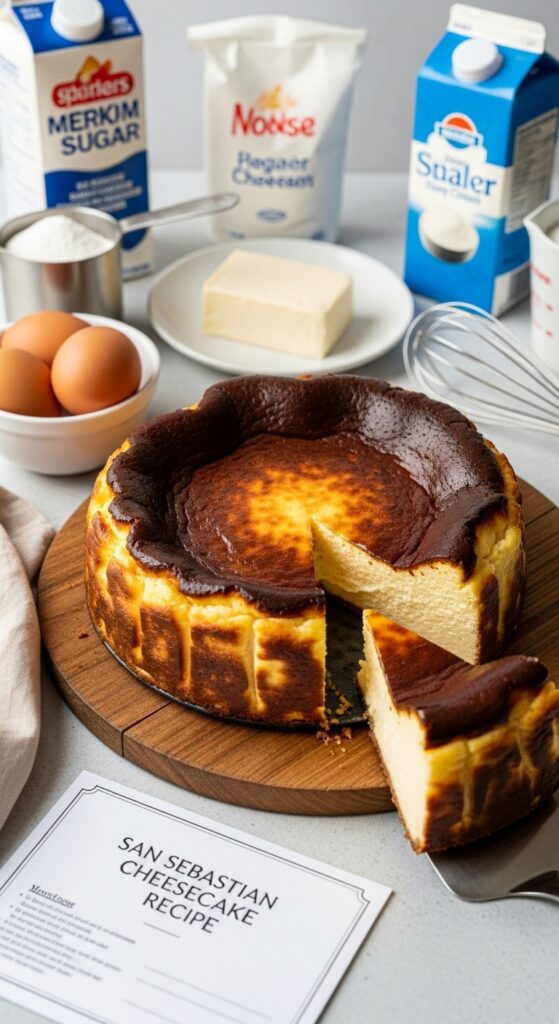
| Ingredient | Purpose | Tips for Best Results |
|---|---|---|
| Cream cheese | Base of the cheesecake | Use full-fat, room temperature cream cheese for smooth texture |
| Heavy cream | Adds richness and creamy texture | Ensure it is cold to maintain structure |
| Granulated sugar | Sweetness | Adjust to taste but do not skip |
| Large eggs | Structure and binding | Use room temperature eggs for even incorporation |
| All-purpose flour | Lightens the batter slightly | Sift to avoid lumps |
| Vanilla extract | Enhances flavor depth | Optional but recommended |
| Salt | Balances sweetness | A pinch brings out all flavors |
| Butter (optional, for greasing) | Prevents sticking | Use unsalted to control flavor |
Pro Tip: Always let cream cheese and eggs come to room temperature. Cold ingredients can create a lumpy batter.
Step-by-Step Instructions
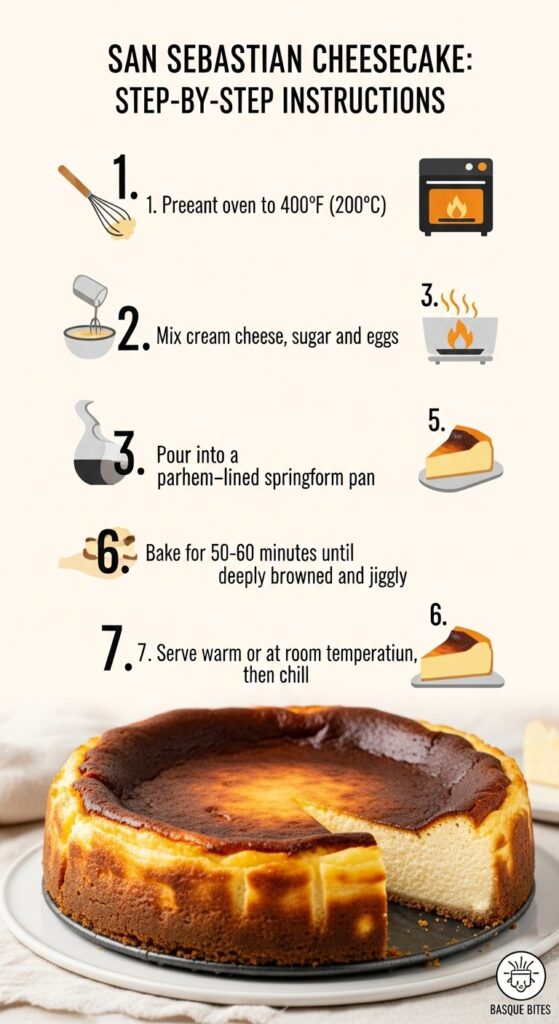
1. Preheat and Prepare the Pan
Preheat your oven to 400°F (200°C). Line a 7–8 inch springform pan with parchment paper, ensuring the sides are well covered, extending slightly above the pan to catch the cheesecake’s slight rise.
Pro Tip: Use a tall parchment collar to prevent overflow and create the iconic rustic edges.
2. Mix the Batter
In a large mixing bowl, beat the cream cheese with granulated sugar until smooth and creamy. Add eggs one at a time, blending gently to avoid incorporating too much air. Gradually pour in heavy cream and vanilla, mixing until fully combined. Sift in flour and salt, and fold until smooth.
Pro Tip: Overmixing can incorporate too much air, leading to cracks. Fold gently and avoid high-speed beating after adding eggs.
3. Pour Batter and Bake
Pour the batter into the prepared pan, smoothing the top. Place the pan in the oven and bake for 45–55 minutes. The top should be deeply caramelized and cracked, while the center remains slightly jiggly when shaken.
Pro Tip: Do not open the oven during the first 30 minutes of baking; this ensures proper rise and caramelization.
4. Cool Gradually
Remove the cheesecake from the oven and let it cool in the pan for 1–2 hours at room temperature. This gradual cooling helps prevent the center from collapsing.
Pro Tip: The cheesecake will continue to set as it cools; don’t panic if it looks too soft initially.
5. Chill Before Serving
Transfer the cheesecake to the refrigerator for at least 4 hours or overnight. This allows the flavors to deepen and the texture to firm up, making slicing easier.
Pro Tip: Serve slightly chilled rather than fully cold to enjoy the creamy texture and rich flavor.
Variations to Try
- Chocolate swirl: Gently fold in melted dark chocolate for a marbled effect.
- Coffee flavor: Add a teaspoon of espresso powder to the batter for a mocha twist.
- Fruit topping: Serve with fresh berries or a berry compote for a tart contrast.
- Caramel drizzle: Enhance the caramelized top with extra salted caramel sauce.
- Citrus zest: Add a teaspoon of orange or lemon zest for a bright note.
Pro Tip: For flavored versions, incorporate ingredients carefully to maintain the delicate texture.
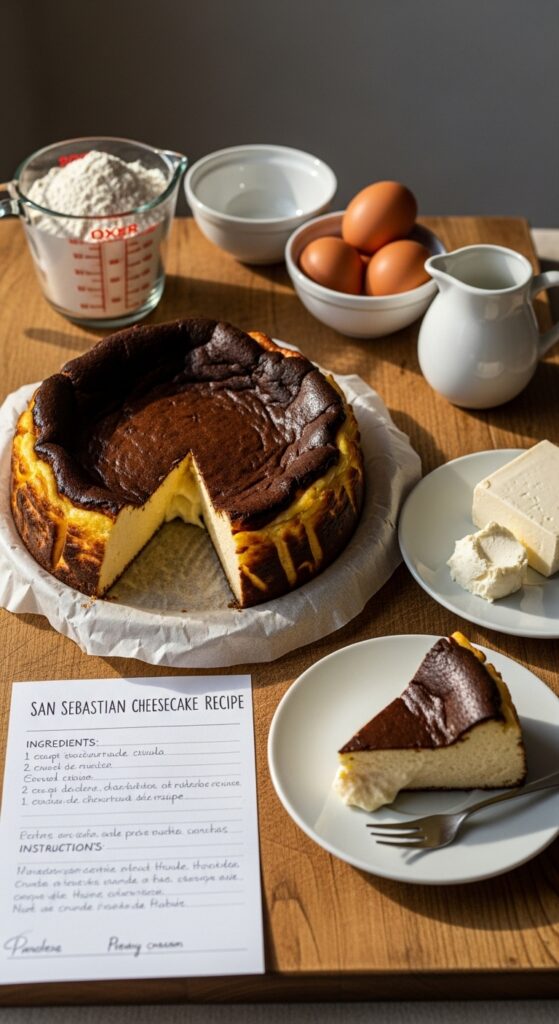
Common Mistakes and How to Avoid Them
- Cheesecake too runny: Underbaking can cause a liquid center. Bake until edges are set and top is deeply browned.
- Cracks on the top: Usually due to overmixing or sudden temperature changes. Fold gently and let the pan cool gradually.
- Parchment sticking: Use a tall parchment collar and grease lightly if needed.
- Top too pale: Increase oven temperature slightly or place the pan higher in the oven for more browning.
Pro Tip: Avoid excessive opening of the oven; heat fluctuations can cause cracks and uneven browning.
Storage and Freezing Tips
- Refrigerator: Store wrapped or in an airtight container for up to 5 days.
- Freezer: Wrap tightly in plastic wrap and foil; freeze for up to 1 month. Thaw overnight in the refrigerator.
- Serving after freezing: Bring to room temperature for 20–30 minutes to restore creaminess.
Pro Tip: Do not freeze the cheesecake with toppings; add fresh fruits or sauces after thawing.
Serving Suggestions
San Sebastian cheesecake is best enjoyed on its own or paired with complementary flavors:
- Fresh berries or fruit compote
- Whipped cream or lightly sweetened mascarpone
- Espresso or cappuccino for a dessert coffee pairing
- A drizzle of dark chocolate or caramel for extra indulgence
Pro Tip: Keep slices rustic—don’t over-handle the cake to maintain the signature cracked surface.
Why This Recipe Works
This San Sebastian cheesecake recipe is designed to balance simplicity with decadent flavor. The high-temperature baking creates the signature caramelized top, while the creamy interior provides indulgence without being overly sweet. Using full-fat cream cheese and heavy cream ensures richness, while gentle folding prevents air pockets and cracks.
- Minimal ingredients, maximum flavor
- No crust, simple preparation
- Versatile for flavor variations
- Restaurant-quality results at home
Final Thoughts
Homemade San Sebastian cheesecake is a show-stopping dessert that impresses without requiring complicated techniques. Its rustic, caramelized top, velvety center, and subtle tang make it irresistible. With this recipe, even novice bakers can achieve the perfect balance of flavor and texture.
Whether served at a dinner party, a family gathering, or just as a personal indulgence, this cheesecake delivers on taste and presentation. With practice, variations, and careful attention to technique, it can become a staple dessert in your kitchen repertoire.
So preheat your oven, line your pan with parchment, and prepare to enjoy the golden, creamy perfection of San Sebastian cheesecake—a dessert that is as beautiful as it is delicious.

